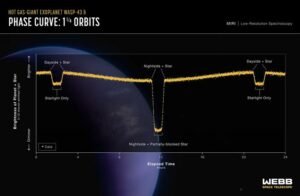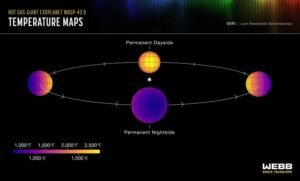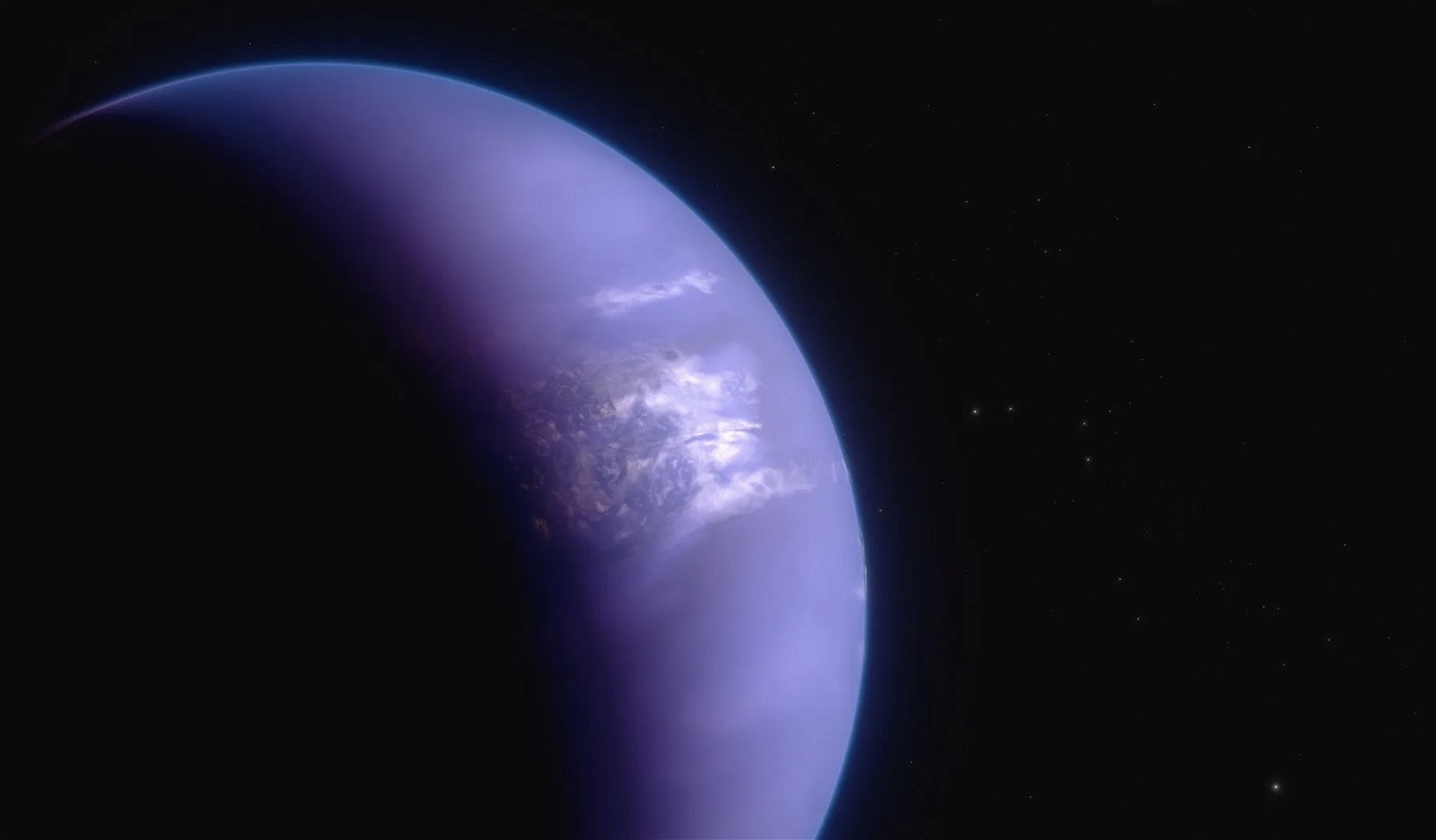Scientists using NASA’s James Webb Space Telescope (JWST) have successfully mapped the weather on a planet 280 light years away. Earlier detections made by older space telescopes had hinted at the presence of an atmosphere on WASP-43b, however, the instruments aboard the JWST are the first to measure the actual weather in the planet’s atmosphere.
“With Hubble, we could clearly see that there is water vapor on the dayside. Both Hubble and Spitzer suggested there might be clouds on the nightside,” explained Taylor Bell, a researcher from the Bay Area Environmental Research Institute and lead author of a study summarizing the discovery. “But we needed more precise measurements from Webb to really begin mapping the temperature, cloud cover, winds, and more detailed atmospheric composition all the way around the planet.”
Although the target planet is a hot gas giant that would be unable to support life as we know it, the first-of-its-kind detection raises hopes that the cutting-edge observatory could one day detect signs of alien life in the atmosphere of habitable exoplanets.
James Webb Space Telescope Instruments Measure Temperature of Planet 280 Light Years Away
After their work was published in the journal Nature Astronomy, the researchers behind the discovery noted that even though WASP-43b is larger and hotter than Jupiter, our solar system’s largest gas giant, it is still “too small dim, and close to its star” for astronomers to see it directly. Instead, they used a process known as phase curve spectroscopy, which allows the precision instruments aboard the JWST to measure tiny changes in the temperature of the star-planet system to infer atmospheric conditions.
For example, Webb’s MIRI (Mid-Infrared Instrument) stayed pointed at WASP-43b for over 24 hours while sampling the planet’s temperature every 10 seconds. This duration of observation revealed a treasure trove of temperature data, especially since the planet orbits its host star every 19.5 hours.
“By observing over an entire orbit, we were able to calculate the temperature of different sides of the planet as they rotate into view,” explained Bell. “From that, we could construct a rough map of temperature across the planet.”


Those readings concluded that the day side of the tidally locked planet (meaning one side always faces the star) averaged nearly 2,300 degrees Fahrenheit (1,250 degrees Celsius). The researchers point out that this is hot enough to “forge iron.” In contrast, Webb’s MIRI instrument determined that the “night” side of the planet that always faces away from the host star was a comparatively cool yet still sweltering 1,100 degrees Fahrenheit (600 degrees Celsius).
“The fact that we can map temperature in this way is a real testament to Webb’s sensitivity and stability,” said Michael Roman, a co-author from the University of Leicester in the U.K.
When the researchers plugged this data into atmospheric simulations similar to those that predict weather on Earth, even more detail was revealed. Most notably, this analysis showed that the night side of the planet is likely covered in a thick layer of high-altitude clouds that can prevent some of the infrared heat from being reflected back into space. As a result, the researchers venture that the night side “looks dimmer and cooler” than it would if there were no clouds in the sky.


Webb Spots Water Vapor but No Methane in WASP-43b’s Atmosphere
The study also detected specific molecules in the planet’s atmosphere, most notably the presence of water vapor on both the nightside and dayside of WASP-43b. According to Joanna Barstow, a co-author from the Open University in the U.K., these types of detections provide astronomers “an opportunity to figure out exactly which molecules we’re seeing and put some limits on the abundances.”
One molecule Webb did not detect was methane. While the team notes that the temperature on the planet’s day side is too hot to allow methane to survive in its atmosphere, the lack of it anywhere suggests the likely presence of extremely high winds across the entire planet.
“The fact that we don’t see methane tells us that WASP-43b must have wind speeds reaching something like 5,000 miles per hour,” explained Barstow. “If winds move gas around from the dayside to the nightside and back again fast enough, there isn’t enough time for the expected chemical reactions to produce detectable amounts of methane on the nightside.”
As previously noted, WASP-43b is not a likely candidate for astronomers and astrobiologists searching for signs of life outside Earth. However, the researchers behind these tantalizing findings do note that the detection and characterization of this planet’s atmosphere from over 280 light years away offers hope to others hoping to spot biosignatures in the atmospheres of smaller, Earth-sized rocky exoplanets, particularly those residing in their host star’s habitable zone.
“The investigation is just the latest demonstration of the exoplanet science now possible with Webb’s extraordinary ability to measure temperature variations and detect atmospheric gases trillions of miles away.”
Christopher Plain is a Science Fiction and Fantasy novelist and Head Science Writer at The Debrief. Follow and connect with him on X, learn about his books at plainfiction.com, or email him directly at christopher@thedebrief.org.

